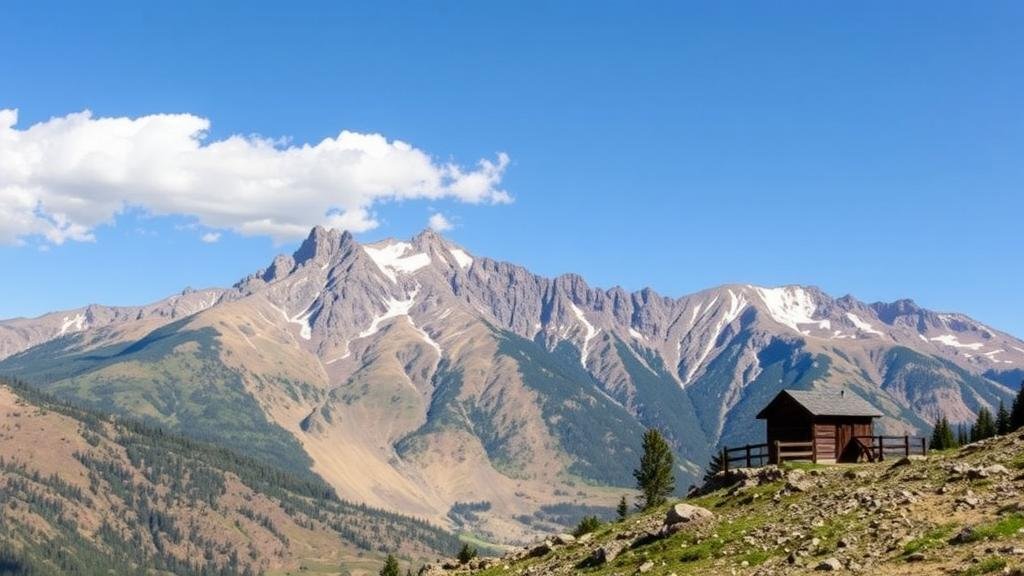How the San Juan Mountains of Colorado Became a Hotspot for Gold Prospecting
The San Juan Mountains: Gold Prospecting Paradise
The San Juan Mountains, located in southwestern Colorado, have long been recognized as a prominent hotspot for gold prospecting. This mountainous range, part of the Rocky Mountains, is characterized by its rugged terrain and rich mineral deposits that attracted thousands of prospectors during the gold rush of the late 19th century. Understanding how this region became a gold prospecting hub involves examining historical events, geological factors, and the socio-economic impacts that resulted from this surge in mineral exploration.
Historical Context of Gold Discovery
The gold rush in the San Juan Mountains officially began in the early 1860s, spurred by the discoveries of gold along the banks of the Animas River and in nearby streams. most notable find occurred in 1870 when Charles Baker uncovered significant gold deposits near the town of Silverton, which became a focal point for prospecting activities. This discovery led to an influx of miners seeking fortune, transforming the area into a bustling mining district.
Geological Factors Contributing to Gold Deposits
The geological composition of the San Juan Mountains plays a crucial role in its status as a gold-rich region. The area is predominantly made up of igneous and metamorphic rock formations that have been subjected to geological processes such as volcanic activity and erosion over millions of years. presence of hydrothermal veins, often laden with precious metals, has been particularly significant.
According to the United States Geological Survey (USGS), the San Juan Mountains are estimated to contain more than 700 million ounces of gold in its various formations. These geological combinations create ideal conditions for the deposition of gold, making prospecting viable for amateur and professional miners alike.
The Gold Rush and its Impact on Local Communities
The influx of prospectors and miners during the late 19th century led to the establishment of several towns, most notably Silverton, Telluride, and Ouray. These towns experienced rapid growth, with Silvertons population peaking at over 5,000 residents by 1880. Mining operations spurred economic development, leading to the construction of infrastructure such as railways, roads, and schools, fundamentally transforming the local economy.
- Silverton became known as a center for mining after the discovery of the rich Peek-A-Boo and Mayflower mines.
- Telluride evolved into a prominent town, famous not only for its mining success but also for its cultural contributions, such as the Telluride Film Festival.
Modern Gold Prospecting in the San Juan Mountains
Today, gold prospecting continues in the San Juan Mountains, albeit in a more regulated and recreational context compared to the historical rush. Modern technology, including metal detectors and sophisticated panning techniques, allows both novice and seasoned prospectors to explore the mineral-rich landscapes of the region. The Colorado Parks and Wildlife agency provides guidelines for recreational prospecting, ensuring that enthusiasts practice sustainable mining methods.
Plus, the appeal of gold prospecting is not solely limited to the pursuit of wealth. Many individuals engage in panning for gold as a hobby, appreciating the connection to history and the natural environment. Local events, such as annual gold rush festivals, celebrate this heritage and promote the continuing allure of mining culture.
Challenges and Environmental Considerations
Despite the historical significance and modern enjoyment of gold prospecting, there are environmental concerns related to mining activities. The potential for land degradation, water contamination, and disruption of wildlife habitats can arise from both historical mining practices and contemporary prospecting efforts. Environmental regulations aim to mitigate these impacts, emphasizing the importance of ecologically responsible mining.
To address these concerns, the Montana Department of Environmental Quality advises prospective gold miners to:
- Research current regulations and obtain necessary permits before commencing prospecting activities.
- Practice Leave No Trace principles to minimize environmental impact.
Conclusion
The San Juan Mountains of Colorado stand as a testament to the enduring legacy of gold prospecting, blending historical intrigue, geological wealth, and modern recreational pursuits. Understanding the factors that contributed to its status as a hotspot for gold not only illuminates the regions past but also highlights the ongoing relationship between society and natural resources. Future prospectors must continue to balance the thrill of discovery with responsible stewardship of this remarkable landscape.


